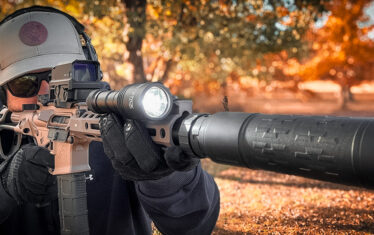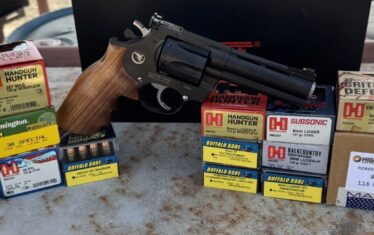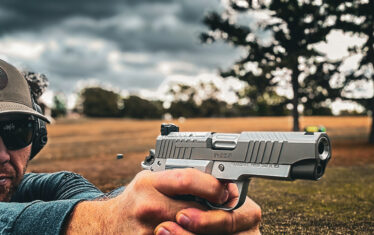The famed quick draw is a massive part of American gun culture. Heck, it’s a part of American pop culture since the Western films of yesteryear glorified the prowess of the quick-draw cowboy.
Getting your gun out of the holster and on target quickly is always the goal, but how do we do it? Well, we need a trained and efficient drawstroke. It isn’t hard. It just takes lots and lots of practice.
I can’t tell you how much practice is required for a quick and efficient draw, but I can help you break down your draw into manageable bits.
It’s a bit like eating an elephant. Take one bite at a time.
Drawing Your Handgun 101
Let’s cover the down-and-dirty steps to drawing a handgun. You can break it down to just a few steps, assuming your hands are at your side, the threat is in front of you, and your gun is on your waistline. Drawing from an ankle, shoulder, or pocket is a bit different.
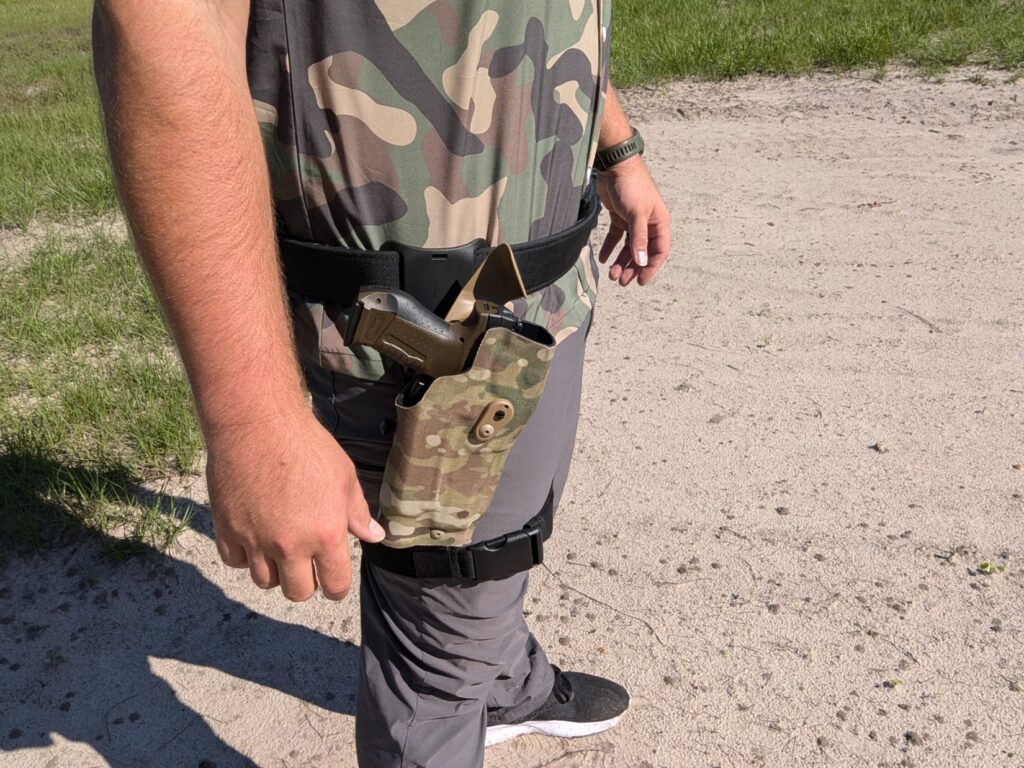
First, grab the gun with your dominant hand and establish a firm grip on it.
As your dominant hand moves to your gun, your support hand should move inward to your centerline.
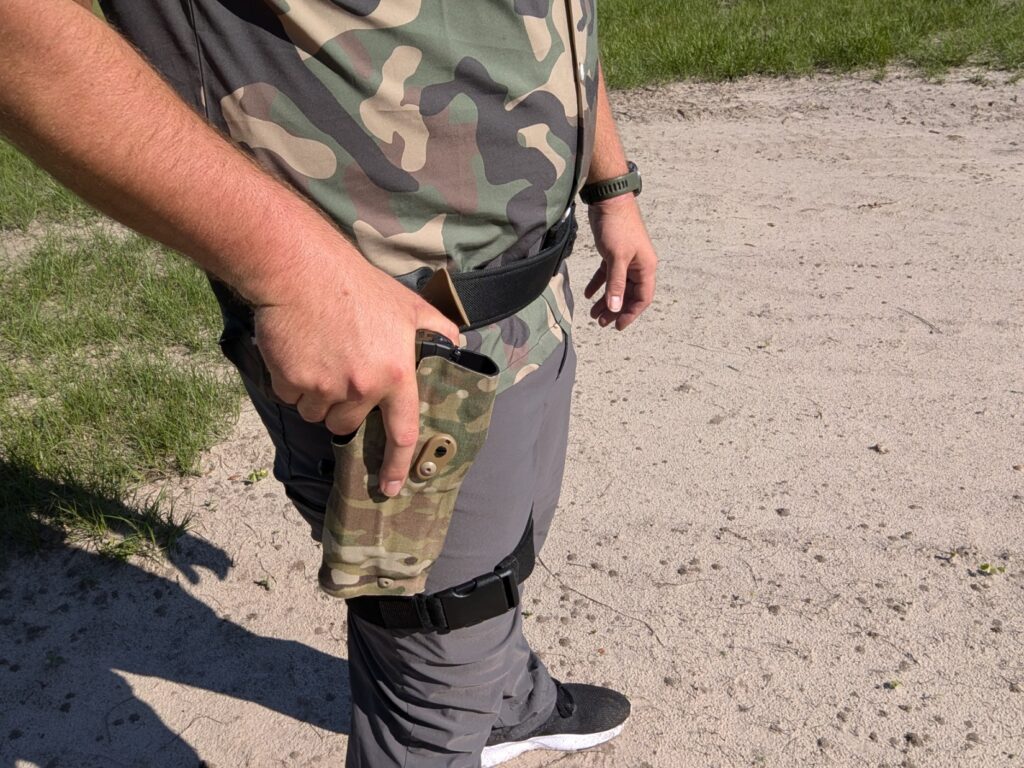
Next, defeat any necessary retention devices with your firing hand.
If you’re using something like the Incog X series of AIWB rigs, there are no retention devices, so you have to skip this step.
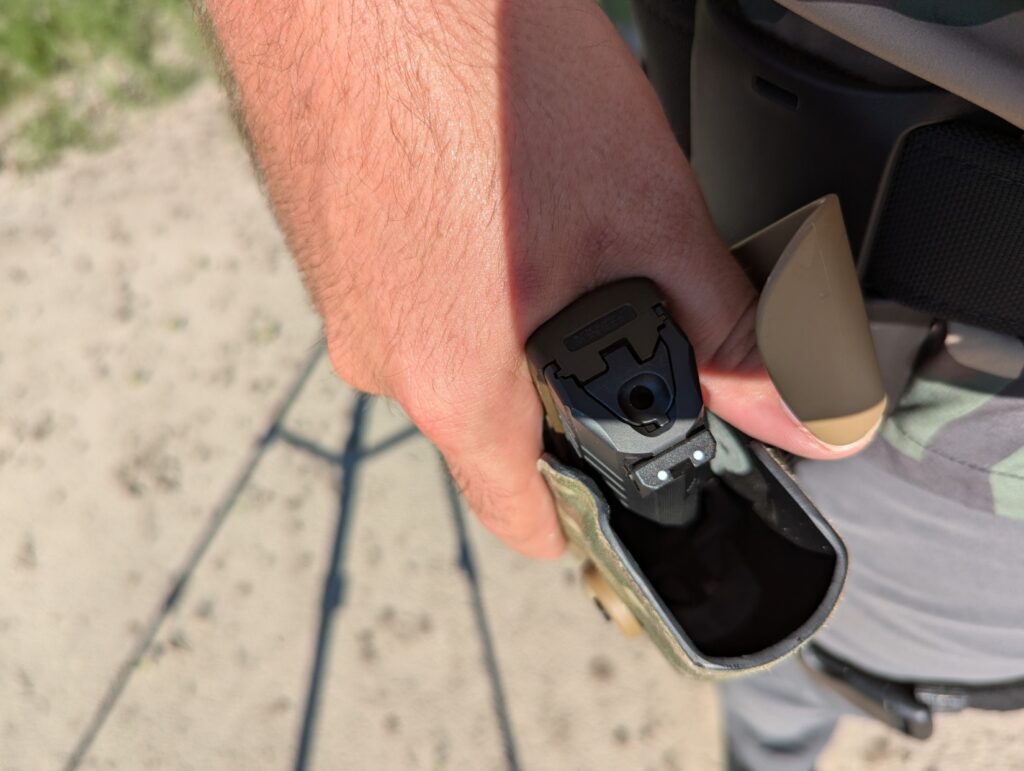
After defeating the retention device, you pull your firearm upward and clear the holster.
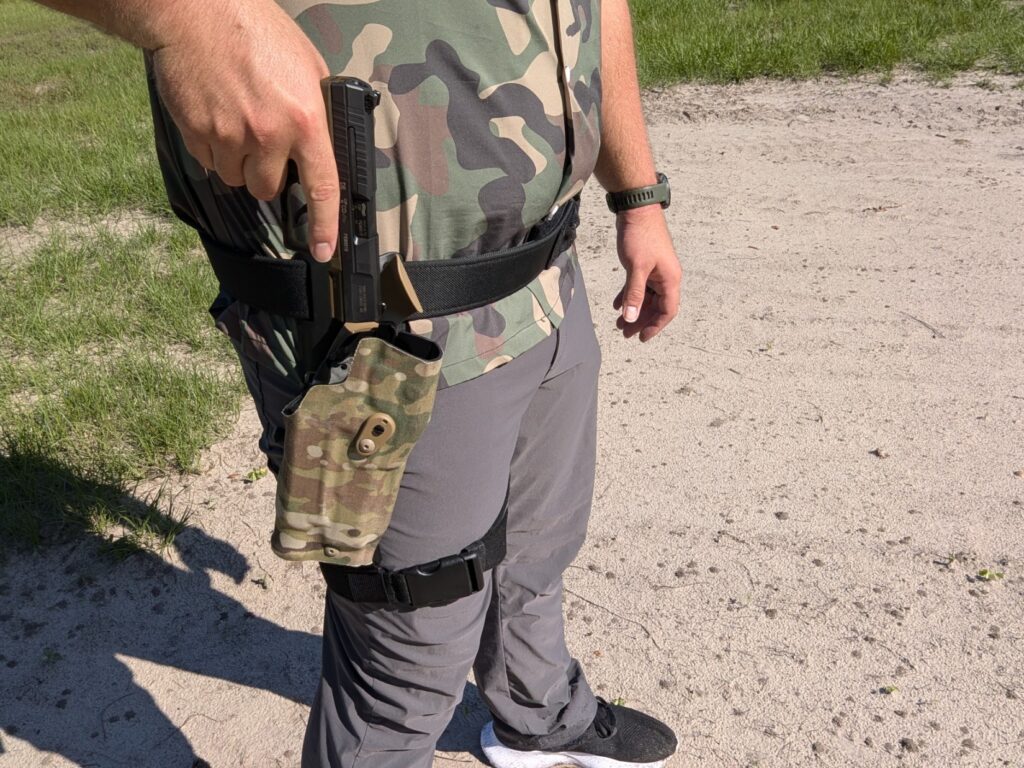
Drive your dominant elbow downward, which raises the gun and orients it toward the target.
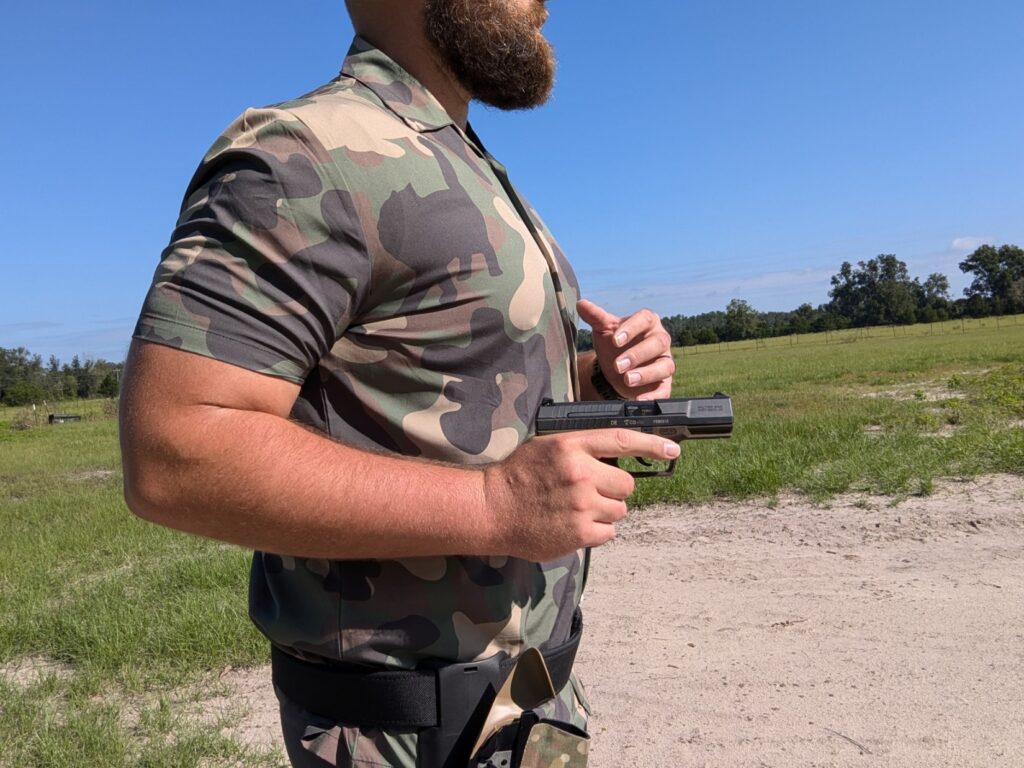
Push the gun forward, and your support hand will meet your dominant hand to create a two-handed firing grip.
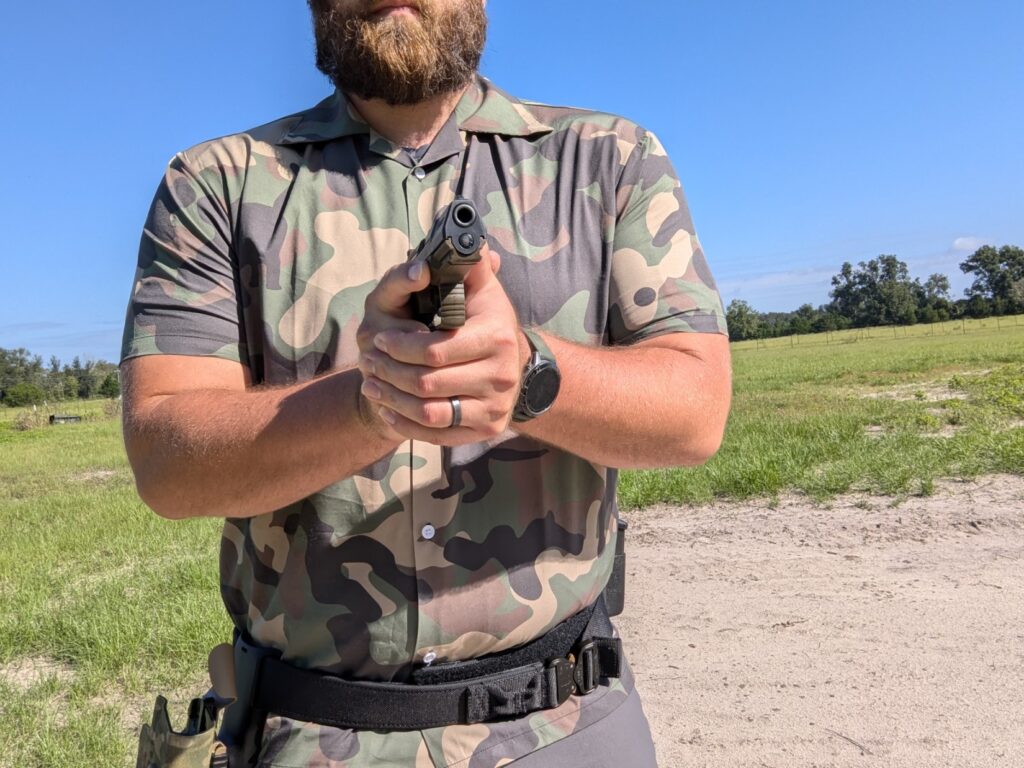
As the gun moves forward, simultaneously focus on acquiring your sights or red dot and ensuring they align with your target.
Once this is achieved, the handgun draw is complete, and you’re ready for the next step: pulling the trigger.
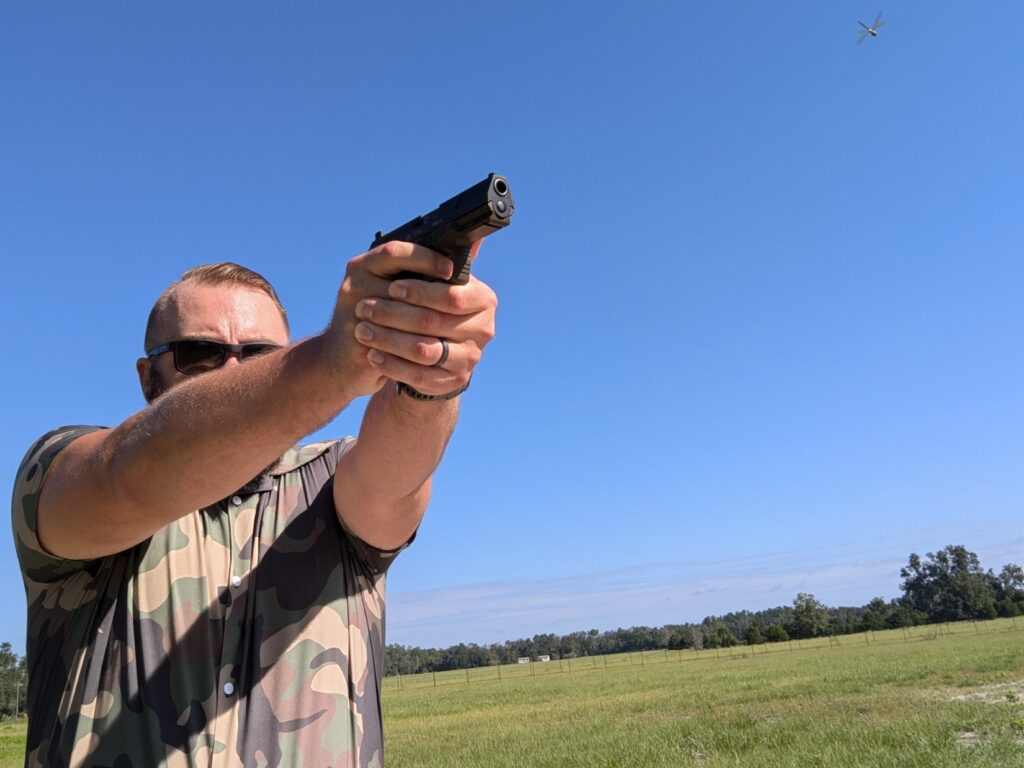
That’s the basics of drawing a handgun, but just knowing the steps won’t make you draw quickly.
You’ll need to practice. Practice an absolute ton, and practice efficiently.
How To Get Faster At the Draw
There are lots of easy ways to improve your handgun drawing, and I’m going to teach you the one that works best for me. I’ve trained with a variety of holster types, including duty and concealed carry designs, and found it to be a pretty universal method.
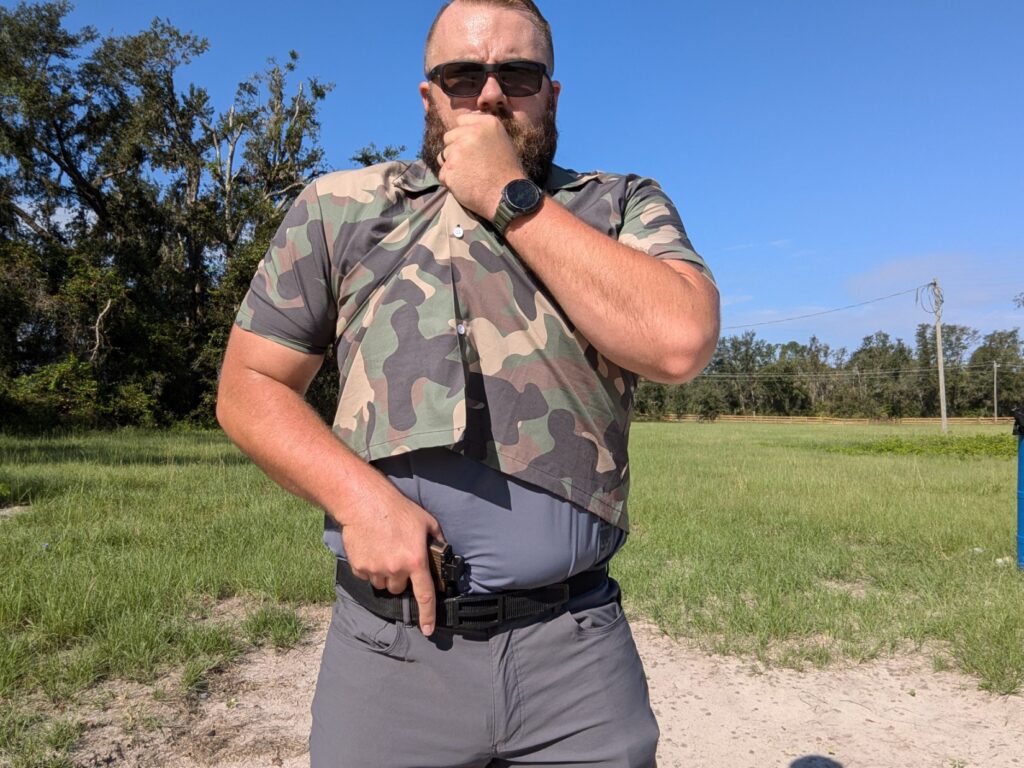
We are going to break down each step and practice it repetitively.
A long time ago, for a very brief time period, I took some informal boxing lessons. The instructor taught us to build a combo by practicing each movement to the point of boring repetition.
That’s what we’ll do with our draw.
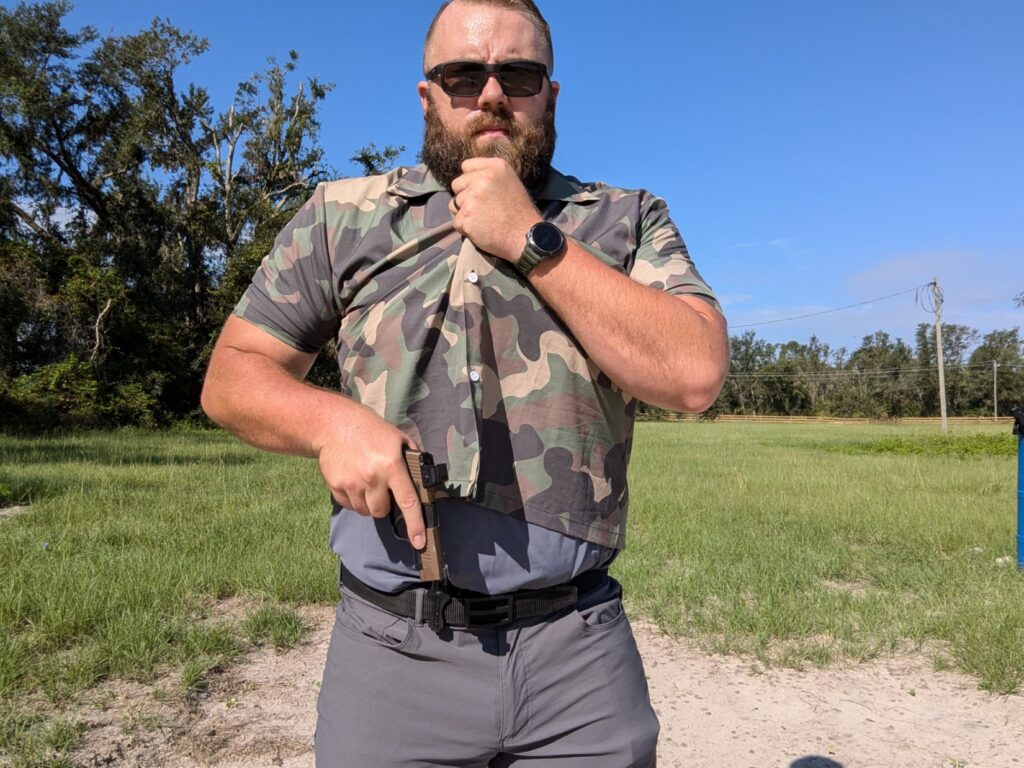
It’s great to have a go signal. You can use a smartphone shot timer or a regular shot timer. That beep just gives you a go signal.
At the go signal you’ll start practicing each step with speed, but only as fast as you properly commit to the movement.

Also, all of this practice will be dry. Remove the magazine, clear the chamber, and store ammo elsewhere. Let’s do it safely and efficiently with a dry gun.
Step by Step
The first step is to grab the gun. When you hear the timer, your hand flies to the gun, assuming a proper grip. Practice this exact movement repeatedly.
If you’re carrying concealed, your support hand will clear the garment. Grab the shirt and pull it upward and out of the way.
At every loud beep, you’ll repeat this action over and over. It will get boring, but the more reps you are willing to put in, the faster and better you’ll draw.
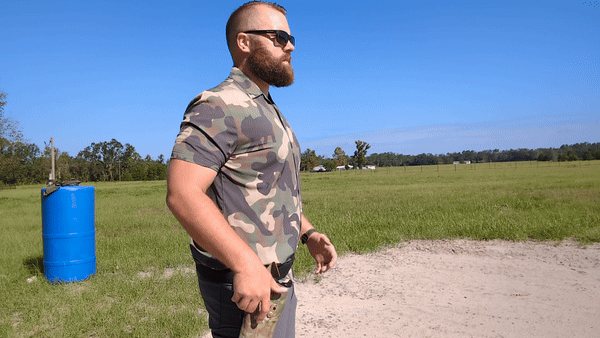
If it’s a duty or competition rig, your support hand will move to your midline, right below your pectoral muscles. Your drawing hand will be positioned to defeat the retention devices.
After practicing that 100 times, move to the next step. For duty guns; this means practicing defeating the retention devices. (If it is a concealed holster, skip to Step 3)
For a Level 3 holster, you’ll create a rhythm. Push down and forward to defeat the SLS device. Pull rearward to defeat the ALS. Mastering these devices makes you realize how little they actually slow you down.
Next, you’re going to shrug. By shrug, I mean pull the gun up and clear the holster. You should get in the habit of keeping your support hand moving to the dominant hand, but since we are going somewhat slow, you can stop centerline but still engage the support hand with every movement.
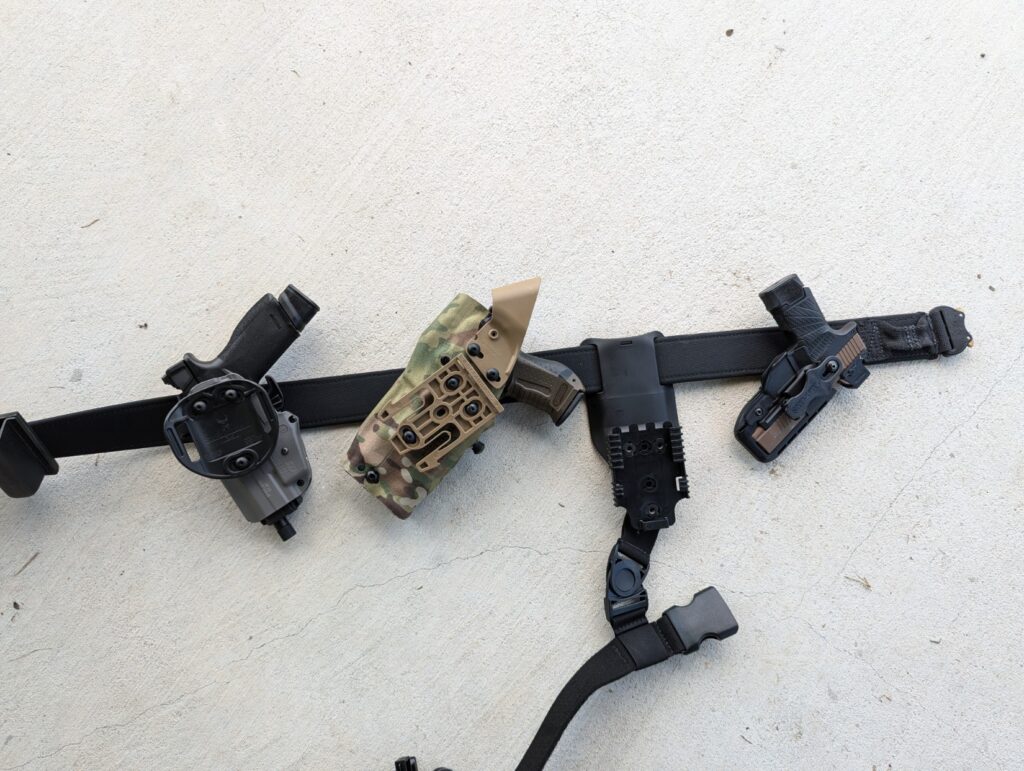
Orient the Gun
From there, drive the elbow down, which orients the gun towards the target. In some situations, you’d be ready to fire in this position if necessary.
Make the movement fast and firm, but you aren’t trying to break a board like Johnny Karate. Don’t exaggerate the movement to the point of it being a detriment.

Your hands will finally meet for the next part of the draw. You’ll drive the gun forward, and the support hand will assume its support position on the gun. The two should flow together smoothly and efficiently.
As you draw the gun forward, you should work to find the sights and align them on target. If you have trouble finding your sights, it’s a sign that your presentation needs work.
Ensure your grip is high and solid and your support hand is adequately gripping the gun. Avoid dipping your sights or turning them too far upward.
Repetition
After doing a ton of reps with each movement, (and I’m not joking when I say 100), you can start to put the draw together. You’ll do it a bit like a pyramid.
- 10 Reps: just grab the gun and move the support hand centerline.
- 10 Reps: grab the gun, move the support hand centerline, and defeat retention.
- 10 Reps: grab the gun, defeat retention, and clear the holster.
- 10 Reps: grab the gun, defeat retention, clear the holster, and drive the elbow down.
- 10 Reps: grab the gun, defeat retention, clear the holster, drive the elbow down, and drive the gun forward with the hands meeting.
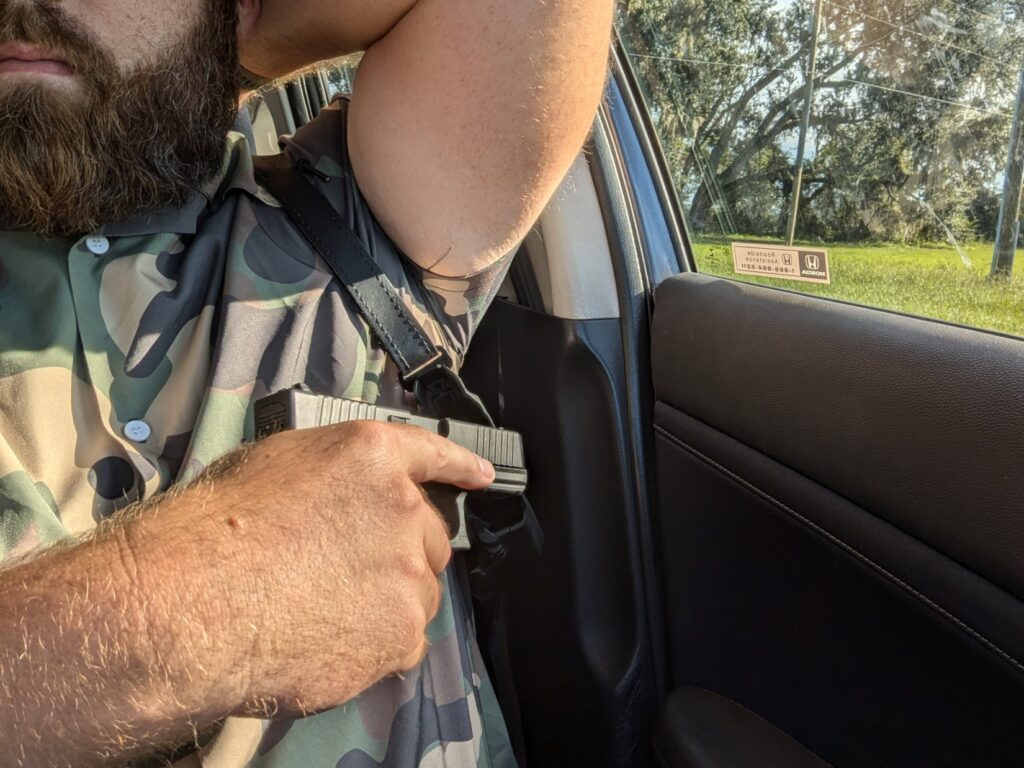
Put it together one step at a time. Remember, you can eat an elephant. It just takes one bite at a time.
On day one, you might not get faster. You might still feel clumsy after hundreds of repetitions. Don’t fret. Your draw is getting better. At night, when you go to sleep, your brain will start forming those connections, and you’ll get faster and smoother.
Getting fast at the draw takes effort, time, and lots and lots of repetition. It’s also a perishable skill that requires a good bit of maintenance. Don’t give up; it’s a life-saving skill you should practice frequently.






